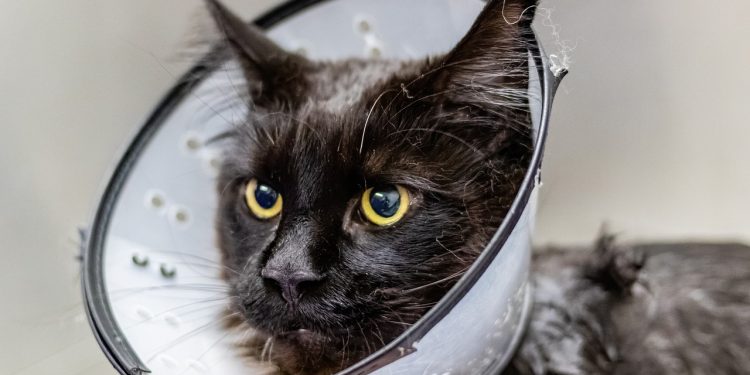Seeing your pet unwell can be a distressing experience, but knowing what to do in the moment can make a significant difference in their recovery. Pets can’t verbalize their discomfort, so it’s up to us as pet owners to recognize the signs of illness and take appropriate action. This guide outlines the essential steps to take when your pet gets sick, helping you provide the care they need promptly and effectively.
Recognizing Signs of Illness
Common Symptoms
- Lethargy: Reduced energy levels or reluctance to move.
- Vomiting or Diarrhea: Persistent or severe episodes can indicate gastrointestinal distress.
- Loss of Appetite: Refusing food for more than 24 hours is a cause for concern.
- Changes in Drinking Habits: Increased or decreased water intake can signal illness.
- Respiratory Symptoms: Coughing, sneezing, or labored breathing.
- Behavioral Changes: Unusual aggression, hiding, or clinginess.
- Skin Issues: Redness, itching, or hair loss.
- Fever: Elevated body temperature; normal ranges are 101–102.5°F for dogs and cats.
When to Act Quickly
- Difficulty breathing.
- Seizures or fainting.
- Persistent vomiting or diarrhea lasting more than 24 hours.
- Ingestion of toxic substances.
- Severe pain or visible injuries.
Immediate Steps to Take
Assess the Situation
- Observe your pet closely to identify symptoms and any potential causes, such as ingested toxins or injuries.
- Keep your pet calm to prevent further stress or aggravation of symptoms.
Check Vital Signs
- Heart Rate: Place your hand on their chest or feel the pulse inside their back leg. Normal rates are 60–140 beats per minute for dogs and 140–220 for cats.
- Respiration: Count breaths per minute. Normal rates are 10–30 for dogs and 20–30 for cats.
- Gums: Healthy gums should be pink and moist. Pale or blue gums indicate a need for immediate veterinary care.
Isolate Your Pet
- If you have multiple pets, separate the sick pet to prevent the spread of potential infectious diseases.
Avoid Home Remedies
- Unless advised by a veterinarian, avoid administering over-the-counter medications or home remedies. Many human medications are toxic to pets.
Contacting Your Veterinarian
Gather Information
- Take note of:
- Symptoms and their duration.
- Recent changes in diet, environment, or behavior.
- Any possible exposure to toxins or injuries.
Call Ahead
- Notify your veterinarian of your pet’s condition before arriving. This allows them to prepare for your visit and prioritize urgent cases.
Emergency Clinics
- If your regular vet is unavailable, locate the nearest 24-hour emergency clinic. Keep their contact information handy at all times.
Transporting Your Pet to the Vet
Keep Them Comfortable
- Use a carrier or secure your pet in the car to prevent movement during transport.
- Provide a blanket or towel for comfort, especially if they’re in pain.
Handle with Care
- Be gentle when handling your pet, as pain or fear may cause them to react defensively.
- Use gloves or a muzzle if necessary to protect yourself.
Veterinary Examination
What to Expect
- The vet will conduct a physical examination, checking vital signs, hydration, and overall condition.
- Diagnostic tests, such as bloodwork, X-rays, or ultrasounds, may be performed to identify the issue.
Providing a History
- Share all relevant details about your pet’s symptoms and recent activities.
- Mention any medications or supplements your pet is currently taking.
At-Home Care
Follow Veterinary Instructions
- Administer medications as prescribed and complete the full course, even if your pet seems better.
- Follow dietary recommendations, such as switching to a bland diet temporarily.
Monitor Progress
- Keep an eye on your pet’s symptoms and report any changes to your vet.
- Look for signs of improvement, such as increased energy or appetite.
Provide Comfort
- Create a quiet, comfortable space for your pet to rest.
- Ensure easy access to food, water, and a litter box or designated potty area.
Preventing Future Illnesses
Routine Checkups
- Schedule regular veterinary visits to catch potential health issues early.
- Keep vaccinations and parasite preventatives up to date.
Balanced Diet
- Feed your pet a high-quality diet tailored to their age, size, and health needs.
Clean Environment
- Maintain a clean living space to reduce exposure to harmful bacteria and parasites.
- Remove toxic plants, chemicals, and small objects that could be ingested.
Handling Emergencies
Poisoning
- Common toxins include chocolate, certain houseplants, human medications, and xylitol.
- Contact a poison control hotline or your vet immediately.
Injuries
- For cuts or wounds, apply gentle pressure with a clean cloth to stop bleeding.
- Immobilize fractures and seek veterinary care immediately.
Seizures
- Keep your pet safe by removing nearby objects and minimizing noise and light.
- Do not try to restrain them. Note the duration and frequency of seizures to report to your vet.
Building a Pet First Aid Kit
Essentials to Include
- Thermometer and lubricant.
- Bandages, gauze, and adhesive tape.
- Antiseptic wipes and hydrogen peroxide (for wound cleaning).
- Tweezers and scissors.
- Emergency contact information for your vet and local clinics.
Being prepared and knowing the right steps to take when your pet gets sick can make all the difference. Acting quickly, consulting your veterinarian, and following proper care routines will ensure your pet receives the best possible care during their time of need.












